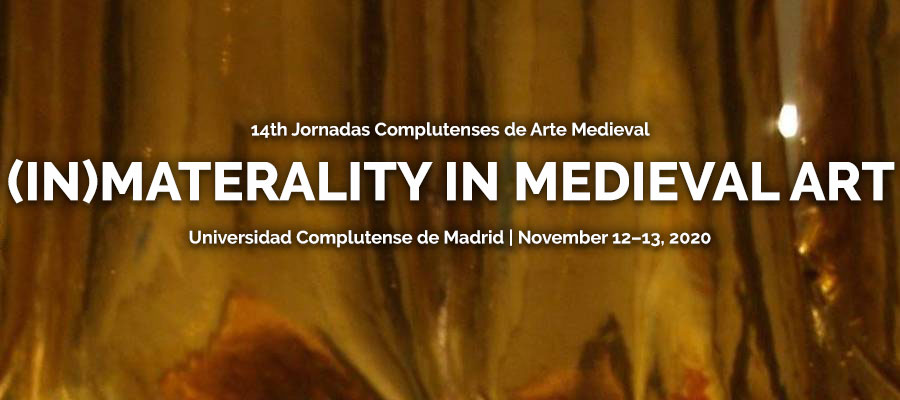(In)Materality in Medieval Art, 14th Jornadas Complutenses de Arte Medieval, Universidad Complutense de Madrid, November 12–13, 2020
Ovid’s aphorism «Materiam superabat opus», evoked throughout the Middle Ages and beyond, reveals the special consideration given to skill, technique and craft in the artistic creation processes. Thus, ingenuity and mastery have been privileged qualities in our approach to works of art, according to a restricted vision assumed by Art History as a discipline. However, both the aesthetic reflections and the documents related to artistic commissions in the Middle Ages show the great importance given to the material and sensory aspects of artefacts and monuments. In line with this perception, once again valued in light of the «material turn» of the discipline in the last decades, the 14th Jornadas Complutenses de Arte Medieval propose to focus on materiality as an essential factor in the artistic production, as well as on the poetics of immateriality and the intangible condition of the aesthetic experience.
Beyond the technical analyses, which in recent decades have allowed us to reconsider common places in the study of the medieval artistic production, this congress aims to establish transversal debates in order to open up new perspectives. In this sense, the material conditions of artistic production (properties, supply, cost, transport or technology, among others), as well as their reflection in the written sources –from technical treatises to documentary and literary references– will be discussed. On the other hand, the congress will address issues related to the sensorial features of the medieval works of art and their relationship with intangible aspects, such as the material and chromatic qualities, the incidence of light, the acoustic and olfactory effects, and the impact of the natural environment. The poetics of the materials, their meaningful uses, and the symbolic values of the immaterial will have room in the debates. Likewise, it will be of interest to consider new interpretative concepts, such as «transmateriality» and «transmediality», which may include the morphological transformation of elements across different materials, the transfer and circulation of ornamental patterns, or the physical traces of mental, invisible or transient phenomena. Contributions that address non-hegemonic and / or under-treated practices and media in historiography are especially welcomed.
Proposed topics:
- Material conditions of artistic creation.
- Underrated practices and media.
- Poetics and semantic uses of the material and the intangible.
- Cultural history of materials.
- Sensoriality and immateriality.
- «Transmateriality» and «transmediality».
Researchers interested in submitting a 20-minute paper on any of the topics listed above are invited to send their proposals in Spanish, English, French, Italian and Portuguese.
